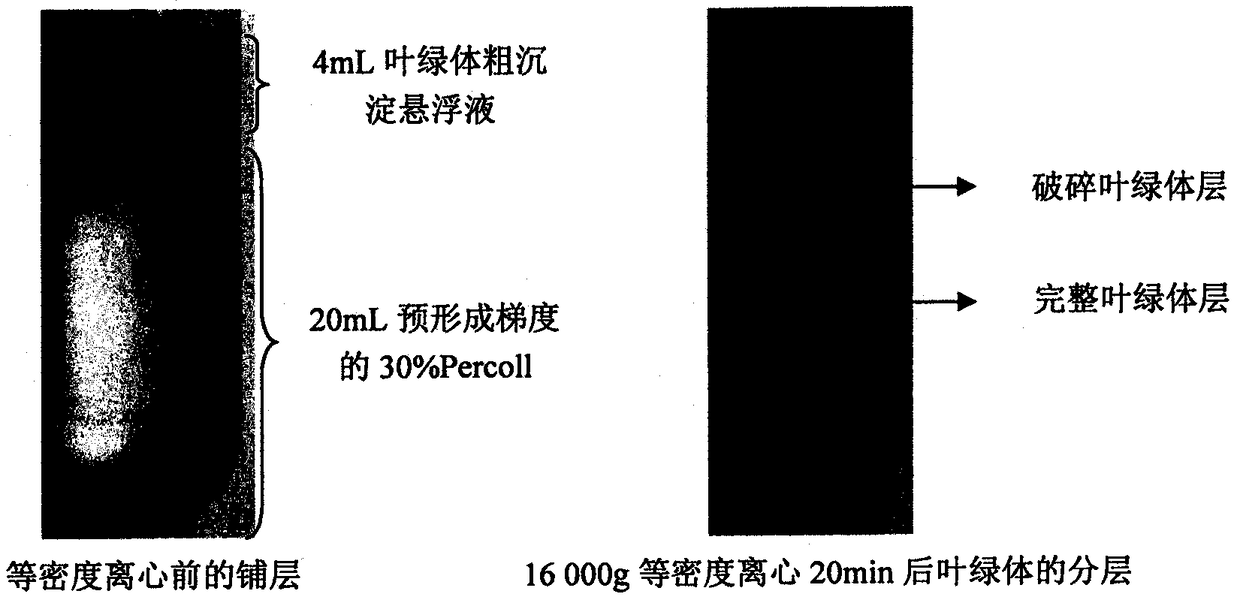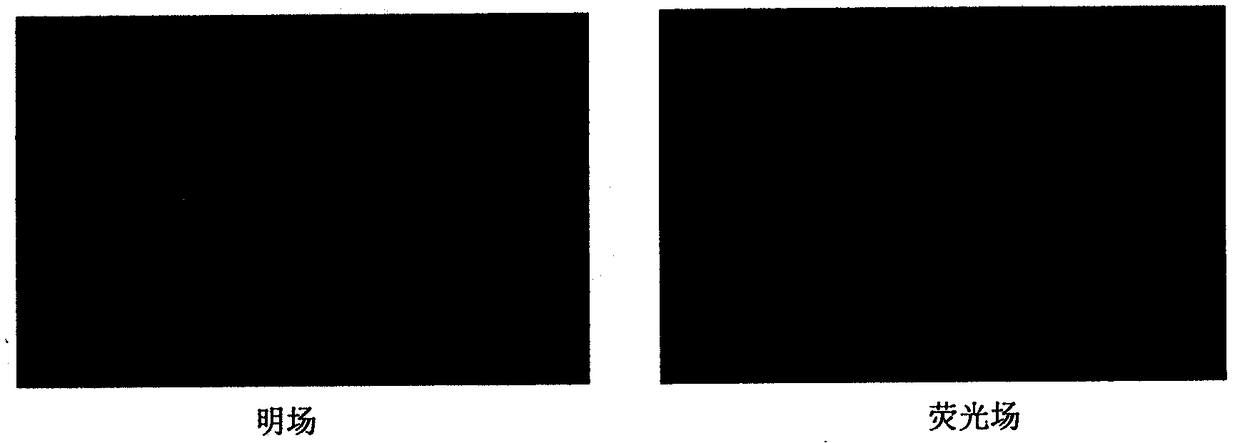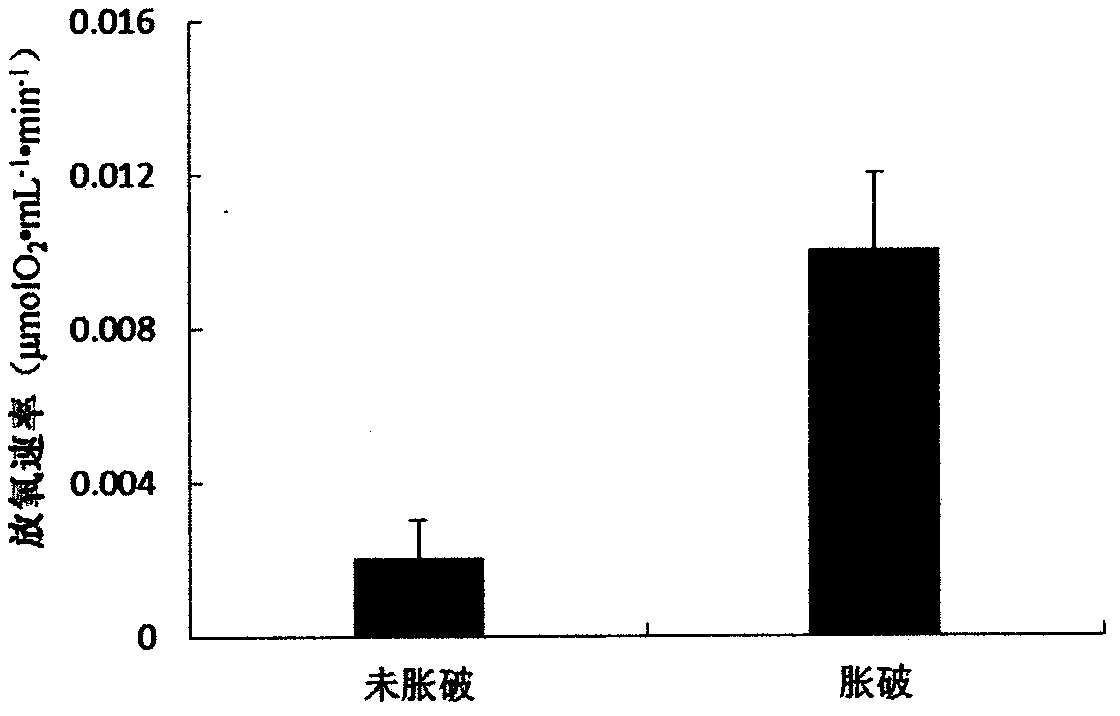Preparation method of intact chloroplasts of Salix matsudana leaves
A chloroplast and complete technology, applied in the field of agricultural biology, can solve the problems of no preparation method of dry willow leaves, public reports, etc.
- Summary
- Abstract
- Description
- Claims
- Application Information
AI Technical Summary
Problems solved by technology
Method used
Image
Examples
Embodiment 1
[0021] Example 1 Preparation of Whole Willow Leaf Chloroplasts by the Method of the Invention
[0022] 1) Sampling and homogenization: Take the fully expanded functional leaves of the dry willow branches in the early morning of the growing season, wash with deionized water, blot the filter paper, and cut the leaves into 5mm 2 Of small pieces. Take 10g leaves and transfer them to WaringBlender homogenizer, add 200mL separation solution (see Table 1), strictly control the number and time of homogenization, first low speed 2 times and then high speed 2 times, 5 seconds each time, 1 minute interval.
[0023] 2) Filtration: filter the homogenate through 4 layers of gauze, collect the filtrate in an ice bath beaker, wrap the residue with gauze after filtration, gently squeeze, and combine the filtrate.
[0024] 3) Preparation of crude chloroplast precipitate: divide the filtrate into 50 mL centrifuge tubes, centrifuge at 200g for 3 minutes in a corner rotor, transfer the supernatant to a n...
Embodiment 2
[0031] Example 2 Chloroplast fluorescence microscope examination
[0032] The chloroplast suspension obtained by the invention is dropped on the center of the slide glass, and a cover glass is added to prepare a temporary mount. Use Zeiss Imager.A1 fluorescence microscope microscopy. Observe the chloroplast image in the bright field to determine whether there is contamination of other organelles in the field of view; observe the chloroplast fluorescence image of the chloroplast under excitation light to determine the activity of the chloroplast. The results showed that the chloroplasts were evenly distributed in the field of vision, and all chlorophyll fluorescence was emitted, and no contamination of other organelles was found.
Embodiment 3
[0033] Example 3 Integrity inspection of chloroplast envelope
[0034] The potassium ferricyanide method is used to test the integrity of the chloroplast envelope obtained by the invention. Take two equal-volume chloroplast suspensions, one to burst in deionized water and the other without bursting treatment, and use an oxygen electrode to detect the oxygen release rate of the two chloroplasts depending on potassium ferricyanide, according to formula 1. By calculating the integrity rate of the chloroplast envelope, it can be determined that the integrity rate of the chloroplast prepared by the method of the present invention is above 80%.
[0035] Formula 1:
PUM
 Login to View More
Login to View More Abstract
Description
Claims
Application Information
 Login to View More
Login to View More - Generate Ideas
- Intellectual Property
- Life Sciences
- Materials
- Tech Scout
- Unparalleled Data Quality
- Higher Quality Content
- 60% Fewer Hallucinations
Browse by: Latest US Patents, China's latest patents, Technical Efficacy Thesaurus, Application Domain, Technology Topic, Popular Technical Reports.
© 2025 PatSnap. All rights reserved.Legal|Privacy policy|Modern Slavery Act Transparency Statement|Sitemap|About US| Contact US: help@patsnap.com



